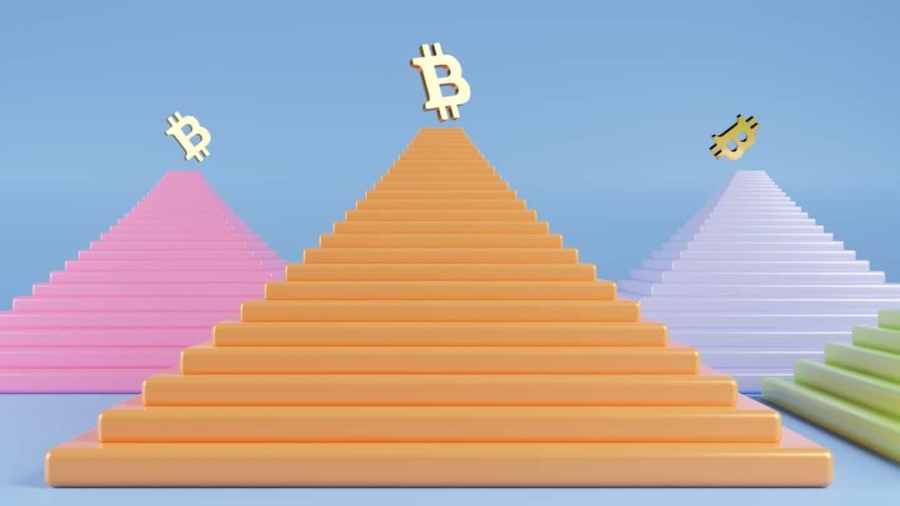The landscape of the gaming industry has undergone a significant transformation over the past two decades, with free-to-play (F2P) games emerging as a dominant force. Unlike traditional gaming models that require an upfront purchase, F2P games allow players to download and play without any initial cost. This model has democratized access to gaming, enabling a broader audience to engage with interactive entertainment.
The appeal of F2P games lies not only in their accessibility but also in their ability to provide a rich gaming experience without the financial barrier that often accompanies premium titles. Free-to-play games encompass a wide range of genres, from mobile puzzle games to expansive multiplayer online battle arenas (MOBAs). The diversity within this category is one of its strengths, as it caters to various player preferences and demographics.
As technology has advanced, so too have the graphics, gameplay mechanics, and storytelling capabilities of F2P titles. This evolution has led to a perception shift; once viewed as inferior or simplistic, many F2P games now rival their premium counterparts in terms of quality and depth. The success of franchises like “Fortnite,” “League of Legends,” and “Genshin Impact” exemplifies how F2P games can achieve both critical acclaim and commercial success.
Key Takeaways
- Free-to-Play games are video games that are free to download and play, but offer in-game purchases and advertising to generate revenue.
- The rise of Free-to-Play games has been fueled by advancements in technology, increased access to smartphones, and the success of games like Fortnite and League of Legends.
- Monetization models in Free-to-Play games include in-game advertising, in-app purchases, subscription services, and loot boxes/gacha systems.
- In-game advertising involves displaying ads within the game environment, often through product placement or video ads.
- In-app purchases allow players to buy virtual goods or currency within the game, such as extra lives, power-ups, or cosmetic items.
The Rise of Free-to-Play Games
The rise of free-to-play games can be traced back to the early 2000s when online gaming began to gain traction.
The launch of Apple’s App Store in 2008 provided a platform for developers to distribute their games widely, and the convenience of smartphones made gaming more accessible than ever before.
As players flocked to mobile devices, developers recognized an opportunity to monetize through alternative means rather than relying solely on upfront sales. The success stories of early F2P titles laid the groundwork for a new business paradigm. Games like “FarmVille” and “Angry Birds” demonstrated that players were willing to engage with games that were free to download, provided they were engaging enough to keep players coming back.
This shift in consumer behavior prompted developers to refine their monetization strategies, leading to the proliferation of various models that would define the F2P landscape. As more players embraced the F2P model, it became clear that this approach was not just a passing trend but a fundamental change in how games were developed, marketed, and consumed.
Monetization Models in Free-to-Play Games

Monetization models in free-to-play games are diverse and often tailored to fit the specific gameplay experience. Developers have become increasingly innovative in their approaches, seeking to balance player satisfaction with revenue generation. One of the most common models is in-app purchases (IAP), where players can buy virtual goods or enhancements that improve their gaming experience.
This model allows players to enjoy the game for free while offering them the option to invest money for additional content or advantages. Another prevalent monetization strategy is the use of advertisements within games. These ads can take various forms, including banner ads, interstitial ads, and rewarded video ads.
While some players may find ads intrusive, many developers have found ways to integrate them seamlessly into gameplay, offering rewards for watching ads or providing ad-free experiences for a fee. This dual approach allows players to choose how they want to engage with the game while providing developers with multiple revenue streams. The challenge lies in striking a balance between monetization and player experience; overly aggressive monetization can lead to player frustration and attrition.
In-Game Advertising
In-game advertising has become an integral part of the free-to-play ecosystem, providing developers with a steady revenue stream while keeping the game accessible to players. This form of advertising can be particularly effective because it allows brands to reach audiences in an engaging context. For instance, a racing game might feature real-world car brands as part of its environment, creating a sense of realism while promoting those brands simultaneously.
This type of integration can enhance immersion and make the gaming experience feel more authentic. Moreover, in-game advertising can take on various formats beyond simple product placements. Developers often employ dynamic ad systems that allow for real-time updates and targeted advertising based on player demographics or behavior.
For example, a sports game might display different advertisements depending on the player’s location or preferences. This level of customization not only increases the effectiveness of the ads but also provides players with content that may be more relevant to them. However, developers must tread carefully; if ads disrupt gameplay or detract from the overall experience, they risk alienating their player base.
In-App Purchases
In-app purchases are perhaps the most recognizable aspect of free-to-play monetization models. They allow players to buy virtual items, currency, or enhancements that can significantly impact gameplay. These purchases can range from cosmetic items—such as character skins or customizations—to gameplay advantages like power-ups or additional lives.
The appeal of IAPs lies in their ability to enhance the player’s experience without forcing them into a paywall. The psychological aspect of IAPs is also noteworthy; developers often employ strategies such as scarcity and urgency to encourage spending. Limited-time offers or exclusive items can create a sense of urgency that prompts players to make impulsive purchases.
Additionally, many games utilize tiered pricing structures where players can spend varying amounts for different levels of benefits, catering to both casual players and those willing to invest more heavily in their gaming experience. However, this model raises concerns about fairness and balance within the game; if players who spend money gain significant advantages over those who do not, it can lead to frustration and resentment among the community.
Subscription Services

Subscription services have emerged as another viable monetization model within the free-to-play landscape. These services offer players access to exclusive content or benefits for a recurring fee, creating a steady revenue stream for developers while providing value to dedicated players. Popular examples include Xbox Game Pass and PlayStation Plus, which offer subscribers access to a library of games for a monthly fee.
In the context of F2P games, subscription models can provide players with perks such as ad-free experiences, exclusive items, or early access to new content. The subscription model appeals particularly to avid gamers who are willing to invest in their hobby but prefer not to make individual purchases for every game or item they desire. This model fosters a sense of community among subscribers who share similar interests and allows developers to build long-term relationships with their player base.
However, it also requires careful management; if subscribers feel they are not receiving enough value for their investment, they may cancel their subscriptions, leading to potential revenue loss.
Loot Boxes and Gacha Systems
Loot boxes and gacha systems represent some of the most controversial monetization strategies within free-to-play games. Loot boxes are virtual containers that players can purchase or earn through gameplay, containing random rewards such as characters, skins, or other in-game items. Gacha systems operate similarly but are often tied to specific mechanics inspired by Japanese capsule-toy vending machines.
Both systems rely on chance and can create excitement among players as they seek rare items or characters. While these systems can enhance engagement by introducing an element of surprise and anticipation, they have also drawn criticism for promoting gambling-like behavior among players. Concerns have been raised about the potential for addiction, particularly among younger audiences who may not fully understand the implications of spending money on randomized rewards.
Some countries have begun implementing regulations around loot boxes and gacha mechanics, requiring transparency regarding odds and potential outcomes. Developers must navigate these ethical considerations carefully while still leveraging these systems as effective monetization tools.
Ethical Considerations in Monetization Models
The ethical considerations surrounding monetization models in free-to-play games are complex and multifaceted. As developers seek innovative ways to generate revenue without alienating their player base, they must grapple with issues related to fairness, transparency, and player well-being. One significant concern is the potential for exploitation; when monetization strategies disproportionately benefit those who spend money at the expense of those who do not, it can create an imbalanced playing field that undermines the core principles of fair competition.
Transparency is another critical ethical consideration; players should be informed about what they are purchasing and how it impacts their gameplay experience. This includes clear communication regarding odds in loot boxes or gacha systems and ensuring that players understand what they are spending their money on. Additionally, developers must consider the long-term implications of their monetization strategies on player retention and community health; fostering a positive gaming environment should be a priority alongside revenue generation.
As free-to-play games continue to evolve, striking a balance between profitability and ethical responsibility will be essential for developers aiming to build sustainable gaming ecosystems that respect player agency while still thriving financially.
A related article that delves into the broader technological landscape is TheNextWeb Brings Insights to the World of Technology. This piece provides valuable context on how technological advancements are shaping various industries, including gaming. By understanding these trends, developers can better navigate the complexities of monetization in free-to-play games, ensuring they remain competitive and innovative in a rapidly evolving market.
FAQs
What are free-to-play games?
Free-to-play games are video games that are available to play at no cost. Players can download and play these games for free, but they often have the option to make in-game purchases.
What are monetization models in free-to-play games?
Monetization models in free-to-play games are the methods through which game developers generate revenue from players. These models include in-game purchases, advertising, and subscriptions.
What are in-game purchases?
In-game purchases, also known as microtransactions, are items or features that players can buy within the game using real money. These purchases can include cosmetic items, in-game currency, or gameplay enhancements.
How do free-to-play games use advertising for monetization?
Free-to-play games may display advertisements to players during gameplay. Developers earn revenue from advertisers based on the number of views or clicks on these ads.
What is the subscription model in free-to-play games?
Some free-to-play games offer subscription services that provide players with additional benefits or content for a recurring fee. Subscriptions can offer perks such as exclusive items, faster progression, or ad-free gameplay.
Are there ethical concerns with monetization models in free-to-play games?
There have been ethical concerns raised about the use of in-game purchases, particularly in games targeted at children. Some critics argue that these models can lead to excessive spending or create unfair advantages for players who can afford to make purchases.

